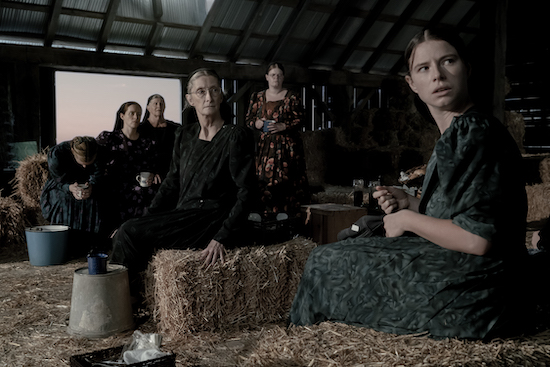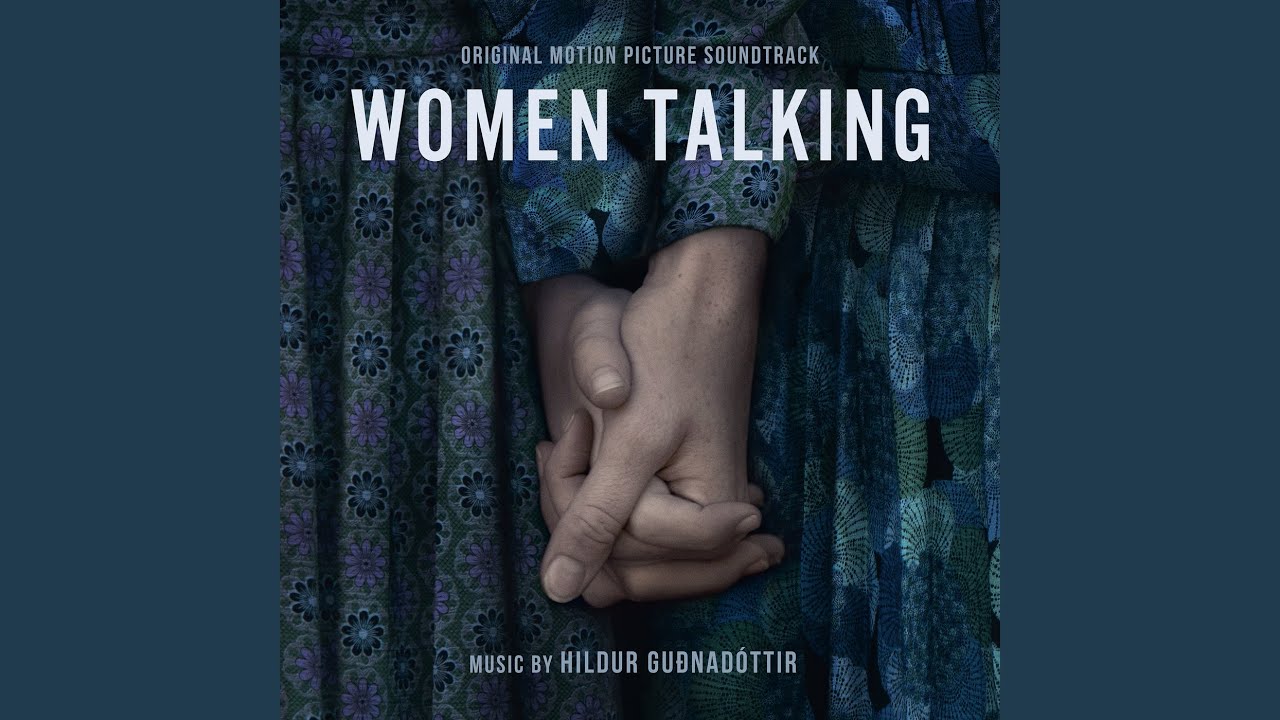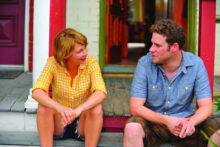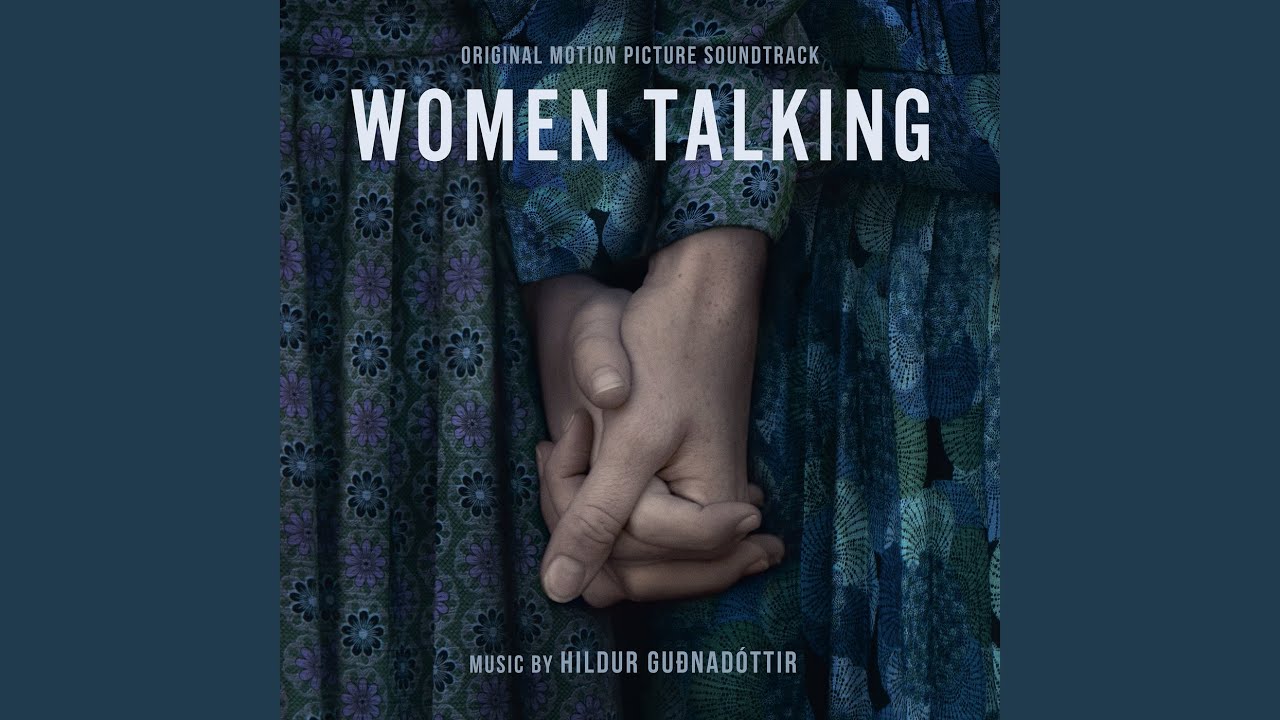© Michael Gibson 2022 Orion Releasing
The portfolio of Icelandic composer Hildur Guðnadóttir gives ample evidence of the artist’s courage to deal with complex subjects and psychologically intense dramatis personae. A master of suspense, Guðnadóttir contributed to the success of 2019’s HBO mini-series Chernobyl and Todd Phillips’s drama Joker, winning her a Grammy Award and an Oscar respectively. Her music also accompanies Trapped, Iceland’s favourite mystery drama series, where the gloomy austerity of nature adds to the whirlwind of a bizarre crime investigation.
Dealing with a dark story again, this time in the context of Sarah Polley’s forthcoming film Women Talking, Guðnadóttir tackles the task with a light touch. However, the process of working on the soundtrack was not as smooth as the result. As the composer admitted in a recent interview, she was paralysed with anger while contemplating the story behind the film. In response to the disturbing subject, she created a soundtrack which addresses complex issues of trauma, reconciliation with the past and the freedom to move on to a brighter future.
Based on the eponymous novel by Canadian writer Miriam Toews, the film’s script refers to actual events, unfolding in a Mennonite community of the Manitoba colony in Bolivia. Following years of sexual violence involving sedative drugs, eight men were arrested, and more than a hundred women testified against them in 2011. The official report confirmed that the offenders sedated families with an animal anaesthetic before attacking the female members while they were unconscious. The youngest victim was nine years old.
Although addressing these real events, both the novel and film refrain from indicating actual personas. Even the setting is ambiguous. While Miriam Toews refers to an imaginary place called Molotschna, Sarah Polley places her characters in an unknown state of America. Similarly, the writer and director add fictional elements that show the transformation of the attitude to traumatic experience. Ultraconservative and deeply religious, some victims believed that what happened to them was a work of evil forces. Others couldn’t speak up because they were afraid of being ostracised. Eventually, women come together and discuss what to do, finally deciding to leave the commune. The soundtrack follows the narrative of the story, starting with a short piece ‘Work of Ghosts’, and continuing with ‘Speak Up’ and ‘Doomsday’.
While much of Guðnadóttir’s previous work has emphasised the thematic intensity of the material at hand, the score for Women Talking compensates for the darkness emanating from the disturbing plot. Her former instrumental density is mostly superseded by a refined sonic sparseness. Eerie strings are replaced by other, more accommodating textures such as guitar and psaltery. The parts performed by these instruments illustrate the film’s rural setting. Meanwhile, fellow Icelandic composer Skúli Sverrisson’s cascading guitar solos add descriptive elements to the music.
One recurrent motif – a melody balancing between sorrow and hope, suggesting a folk song of unknown origin – appears in different variations throughout the score. Various instruments contribute to the patterns of this gossamer sonic lacing, as delicate as the film’s subject matter: the pure vibrance of a psaltery (the score’s cue ‘Speak Up’), Vivaldi-esque dramatic strings (‘Not All Men’), the plucking sound of a viola hinting at deep contemplation (‘Always’).
Alongside pieces that suggest a glimpse of hope, one, entitled ‘He’s Here’, has a touch of the composer’s trademark drama and unnerving tension. Quick brushes of strings paint a dark mise en scène, evoking terror. The chase-and-catch-like movement conjures up the heartbeat of a bird attempting to flee from a beast of prey. It feels like one of those dark and uncomfortable dreams, when despite an overwhelming feeling of terror and a strong wish to escape, your body remains numb, paralysed by sleep.
Yet, light, hope and justice prevail. These three themes are key motifs of the original soundtrack for the film. The latter is delivered in a minimalist manner by percussion instruments, mostly the metallic tones of a hang. These impressionistic bits accompany the scenes where, having acknowledged the reality of their situation, the women of the Mennonite community gather to decide on their actions. On ‘Doomsday’, the solo rhythmic patterns, produced on the hang, exude courage and determination for change. Slight variations of these patterns deliver different meanings, e.g., on ‘Work of Ghosts’, ‘Jumping’ and ‘Pros and Cons’ (when the still reluctant women consider different scenarios for the future). Despite the sparseness, there is an overall sense of diligence and impeccable lightness. The silences and pauses are charged with energy. Each sound conjures up a distinct image from the women’s life – and even more: their thought process. In this case, stillness speaks of reflection on the traumatic events, reconciliation with the past and a capacity to create some distance from the offence. The ringing overtones of the instruments, combining textures similar to a Bonshō bell and Tibetan cymbals, offer up associations with spiritual practice. In this way. Guðnadóttir creates a safe, almost zen-like space, that would seemingly serve as a refuge, regardless of circumstances.
The deliberate minimalism resonates with the director’s decision to exclude scenes of sexual violence from the film. Therefore, the focus is on the characters and real members of the community who suffered the assault rather than the events of the plot. While occasionally zooming out to show the wider picture (the pristine nature of the countryside and quirkiness of the commune hinted by the psaltery), the soundtrack primarily zooms in on the inner world: the thoughts, feelings and emotions of the victims. A more abstract medium than film, the music addresses the themes of justice and hope in a global context. It amplifies the transition from the state of helplessness to action, disregarding the conventional social categories of gender, social status or nationality. In part, it resonates with current-day topics such as the ongoing protests in Iran, but this is only the tip of the iceberg. Considering the story, the soundtrack leaves one with a feeling of post-traumatic recovery. However, there is no sense here of self-pity; only grace and the ultimate acceptance of fragility.





